Why Should You Care About Product-led Growth?

Reading Time: 11 minutes
In 2021, TikTok ranked first worldwide in downloads, first in consumer spend, and sixth in monthly active users (MAUs). No other app makes it to the top 10 in all three lists. Not even Facebook or Instagram.
Dig a little into TikTok’s growth story, and it’s easy to see why the app is where it is: A product-led growth strategy with engagement and customer satisfaction as its core focus.
Product-led growth as a strategy is being adopted worldwide by every major brand because of its potential to blitz scale the growth and success of a product. TikTok went from 0 to 1 billion active monthly users in just five years, ahead of its competitors.
In this blog, we take a deep dive into product-led growth: what it is, why it’s essential and how brands can work on implementing a good product-led growth strategy.
What is Product-led growth?
Driving Growth Using the Product-led Growth Model
In very simple terms, that’s what product-led growth means—the product is the primary driver for growth. When we define product led growth, we mean that by building such a good product, that existing customers themselves sustain and enhance its growth rate. Product-led companies have the inherent belief that a good product does not have to be sold, it can sell itself.
Think of Google Pay—chances are that the first time you heard about it or started using it was not because of their marketing campaigns but a positive review from a friend or co-worker along with a gentle nudge to use their referral code. This is one of those successful product led growth examples, that was being referred above.
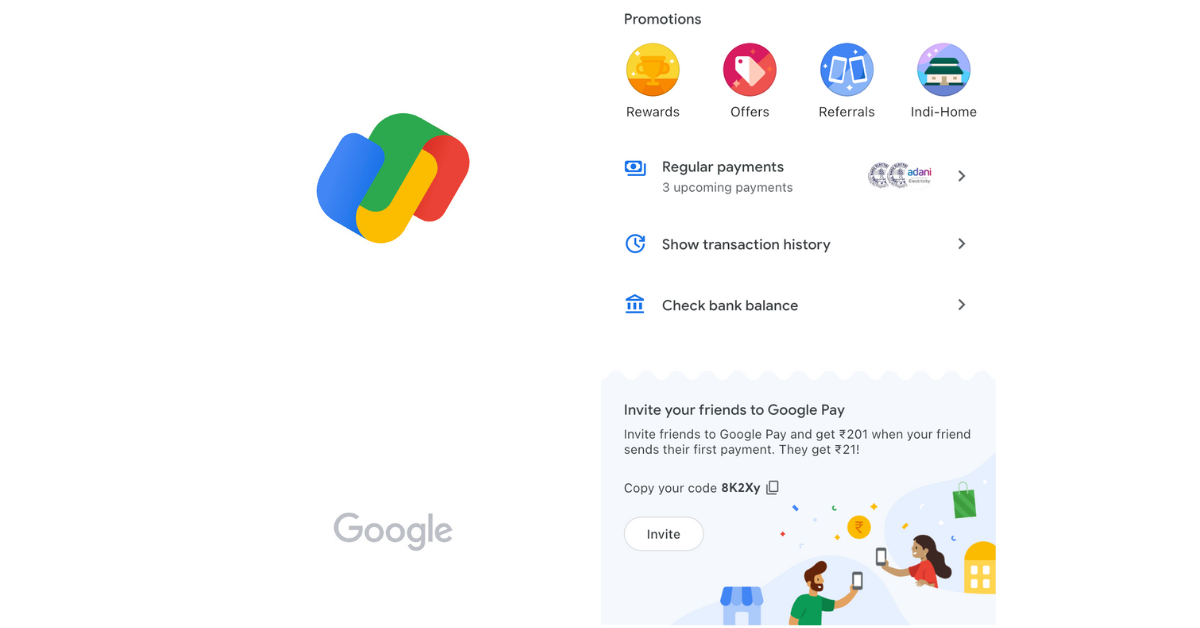
This helped them clock over 7.5 million installs a month in their biggest market, India. Globally, the payments interface recently crossed 150 million customers across 40 countries.
Product-led growth aims at delivering a hassle-free customer experience that makes the customers ambassadors for the product.
Engagement and Retention
To a large extent, Product-led growth is about focusing on engagement and retention. This is based on the belief that multiple positive experiences a customer has with a product will increase the likelihood of them referring that product to other customers, setting in place a domino effect.
Let’s take the example of Fender—the world’s largest Guitar manufacturer, which had to face a unique customer engagement problem: due to a steep learning curve, more than 90% of new players won’t pick up a guitar again after the first six months. Such customer behavior limits what the sales team can do.
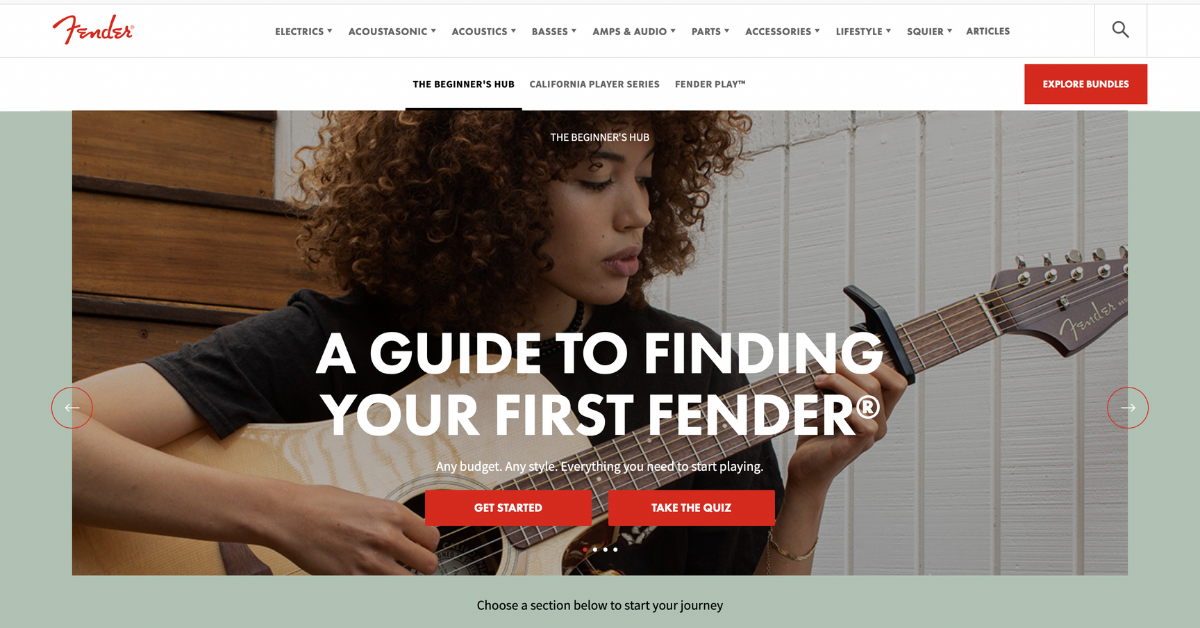
To solve this, Fender decided to modify their online customer journey by launching a series of apps that allowed the customer to engage with them long after their purchase. By giving them new features like access to tutorials and subscription-based online lessons, Fender ensured both: greater customer engagement and loyalty and increased customer satisfaction. This would also translate into increased revenue generated and an improved customer lifetime value.
Customer UX is Key
Product-led growth is also about delivering a good and seamless customer experience rather than investing in other marketing avenues. Product-led businesses reduce churn rates by creating a journey free of any hindrance from start to finish.
Going back to the example of TikTok—while the app was not perfect when it was launched, it started making rapid updates based on customer feedback, eventually reaching a point where every feature in the app was a maximum of three taps away.

This ensured that the app was successful not only in the first world but also in third world countries where education and awareness have been a barrier for many products. Such a product-led strategy that simplifies the journey can go a long way toward reducing acquisition costs.
Improved Customer Acquisition
Product-led organizations will find the process of acquisition of new customers a lot easier than companies that rely solely on traditional sales-led methods. A product-led model will also help maintain customer loyalty because of the emphasis given to customer feedback and creating positive customer experiences.
A relevant example here is how popular US bridal wear brand Cocomelody could increase its CVR by 14% by reimagining its customer journey. Realizing that bridal customers wanted to see, feel and try on dresses before purchasing, Cocomelody introduced a ‘Try at Home’ campaign which allowed customers to try any wedding dress for just $25.

Innovative product features like this stand out and can increase retention, apart from making the job of the sales team a lot easier. Such a marketing strategy aimed at the comfort of the customer is the crux of a product-led approach.
Why is Product-led growth Important?
Growth in a Competitive Market
Delivering consistent growth in today’s competitive market can be tough. The marketing efforts of a company would not yield the desired results unless it is backed up by a product that ensures the customers gain significantly more than the value of their time spent on the product.
That’s where product-led growth comes in. By tinkering with the product based on consumer behavior and customer feedback, its value proposition in the market is improved.
Consider the example of a very competitive app space—music streaming. While there are plenty of existing giants in the field apart from several new players, Spotify steals the show with over 350 million customers and over 150 million active subscribers.
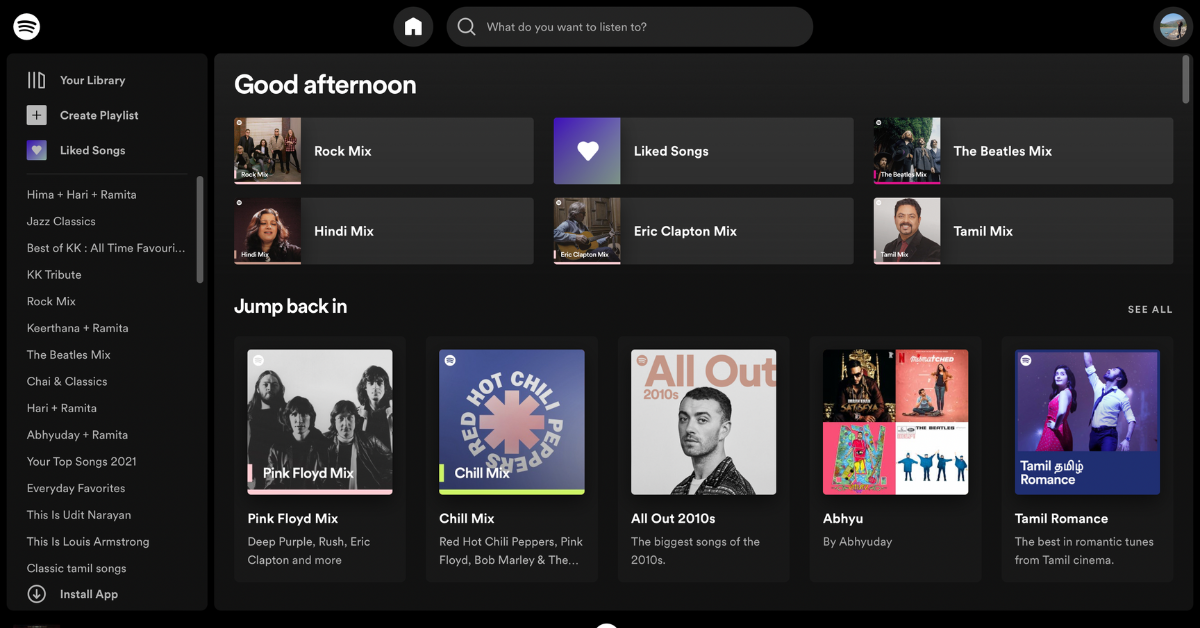
While most other apps struggle to have a conversion rate of even 10% of their customers into paying customers, Spotify has been able to convert almost half of its customers into paying subscribers. How? A Product-led growth strategy.
Spotify added an option to share music to social media, enable customers to discover concerts close by, the ability to create collaborative playlists, and even an Uber integration—where customers can play their own music while taking an Uber. All these features helped Spotify differentiate itself clearly from the other players in the market, making it easier to acquire customers.
Drive Engagement in Low-Frequency Usage Apps
Driving customer engagement in low-frequency usage apps has always remained a challenge. How do you get customers to engage with your product more when you know that the nature of your product is such that they would only use it once in a while? The answer—Product-led Growth.
Here’s an example of how Airbnb built one of the most successful referral programs ever, producing 300% more referrals and signups than before.
Think of yourself—how often would you want to book an Airbnb and have a weekend away? Once, twice, or maybe thrice a month if you’re feeling particularly adventurous. Such low levels of engagement would make it incredibly hard for a product to grow and acquire new customers.
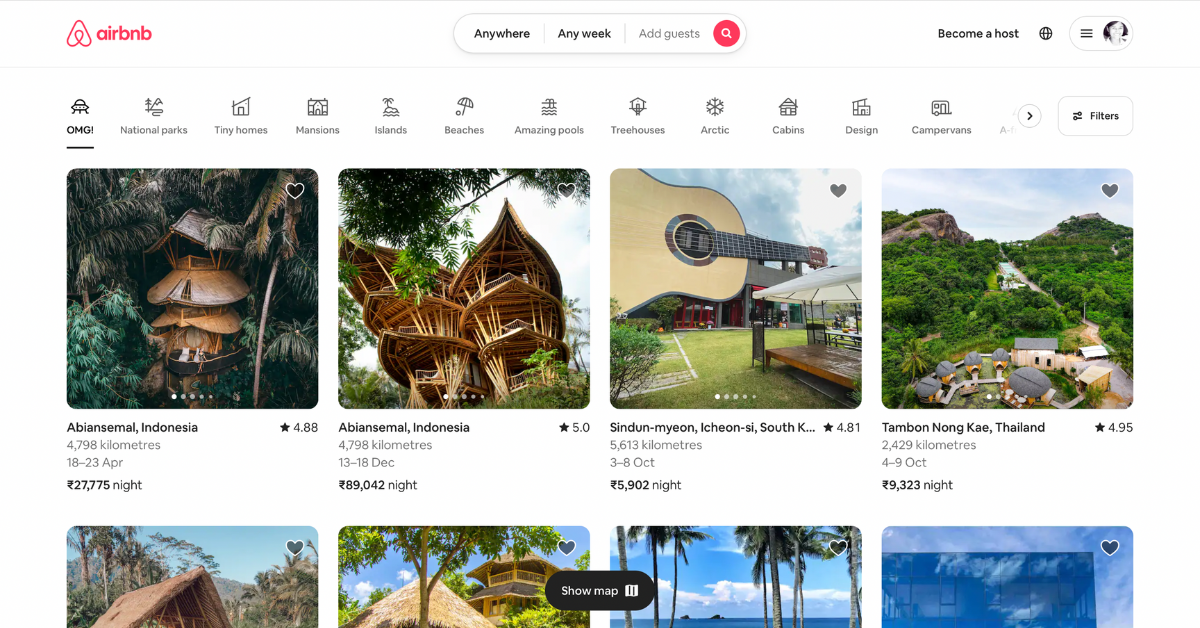
This is the problem Airbnb was solving— how to increase Airbnb occupancy rate, and they came up with an incredible fix. They introduced a referral scheme, where both the sender and recipient would get $25 in credit when the invited friend completes their first trip.
“Referrals are highly measurable, scalable and are all about identifying a growth pattern that’s already happening but amplifying it at a key moment”, says Jason Bosinoff, Director of Engineering at Airbnb.
Giving their product this additional feature proved to be a game-changer for Airbnb’s business strategy. That’s why it’s crucial to have a product team that has a keen eye for what features to add at what moment to give the product the push it needs. This would make customer acquisition a lot easier for a product-led growth company than it is for apps with low-frequency use.
Drive Stickiness
The success of any product is driven primarily by the stickiness it creates. Stickiness is the intensity with which customers repeatedly use the product. It measures their loyalty and their ability to win new customers through referrals.
Any product with high levels of stickiness will be able to retain more customers and achieve higher growth. If, even after customer acquisition, stickiness remains low, it doesn’t justify the customer acquisition cost. Product-led growth strategies can go a long way in driving stickiness.
Stickiness is conventionally measured by dividing the Daily Active Users by the Monthly Active Users, more simply, DAU/MAU. A study in 2020 found that SoundCloud was the Stickiest Mobile Social App in the US, having a DAU/MAU ratio of 93%. Although a DAU/MAU analysis comes with its limitations, it is worth looking into why SoundCloud stands out.
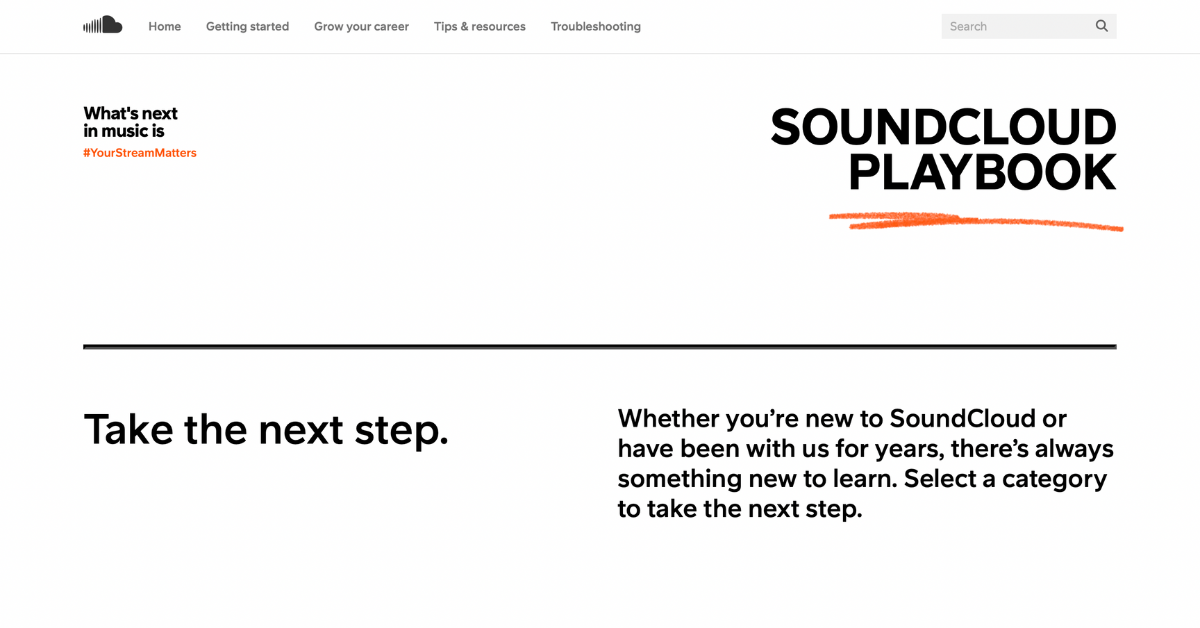
Apart from the platform it gives to independent artists that allow talents like Post Malone to be discovered, there are a lot of features woven into the product that drives its popularity. The audio being displayed in waveforms and the ability to comment on any particular point in the song are features unique to SoundCloud.
Customers on the free plan also have the ability to upload up to 180 minutes of audio and can listen to unlimited audio. Their uploads are given distinct URLs to make sharing easier. There’s also the ability to create and join groups to make their own community. This is a classic example of how a strong product with distinct features can help product-led growth companies drive customer satisfaction and, of course, stickiness.
Implementing a Good Product-led Growth Strategy
Script a Product Vision
A product-led growth model beings with a vision. A vision of a business model that solves a particular problem of the customer in the easiest way possible. Product Managers should also take into account the high expectations of customers from the products they spend money on and ensure that the product helps the customer save time/money or do something better.
Splitwise is a good example of a product that does all three — it saves you the time you would otherwise take to split expenses, it saves you money by making sure that you pay only exactly what you owe, eliminating any human errors, and most importantly, it does the task of splitting expenses better. Its Simplify Debts feature does a great job at reducing the total number of transactions to just a few. A good product vision should be guided by these three parameters.

Build a Strategy and Roadmap
What comes next is a carefully crafted strategy and roadmap to achieve this vision. One of the best ways to do this is to orchestrate customer journeys by understanding customer behavior and mapping out all their possible interactions with the product, from the onboarding process to the desired end results.
Product teams must then work on simplifying this and making it incredibly easy for a customer to interact with the product. A good roadmap also aims at minimizing friction, reducing the net revenue churn, and scalable business growth.
“Building a successful product and company is like producing a movie. You have a script and a vision first, followed by filming. Then, you sell tickets.” says Keith Rabois, General Partner at Founders Fund.
Drive Collaboration
For a product-led growth model to be successful, collaboration between product, business, and marketing teams is essential.
An effective way to do this is to reduce the number of decisions that have to be taken, especially the ones that need to be made on a recurring basis. This is because a situation that involves multiple decisions requiring the opinions of many stakeholders leads to unpredictability and disagreement.
Grammarly is a perfect example of a product-led business. This is because the product as it was launched and what it is today is completely different, with Grammarly tinkering with the product throughout its journey based on feedback and an improved understanding of what the customers want.

Their shifts in marketing strategies went hand-in-hand with how the team was evolving the product. And it is such synergy that helped Grammarly grow from 1 million daily active users in 2015 to 30 million in 2020.
Determine KPIs for Growth
Measuring product-led growth metrics is important to ensure that the efforts of the product and marketing team are going in the right direction. But determining and measuring product growth can be challenging. This is because there is no definite list of metrics for product growth.
The KPIs for different products can be very different and influenced by the nature of the product, market positioning, frequency of use, etc. Creating suitable KPIs for a product can be made easier by grouping them into three buckets: customer acquisition, customer problem solving, and engagement. This will help develop unique KPIs for each bucket which then become a point of focus for different teams.
Notion is widely considered as the poster child for product-led growth. With a $10B valuation, 20M+ customers, Notion’s growth strategies are looked up to worldwide. It’s insightful to take a look at some of the KPIs Notion looks to analyze.
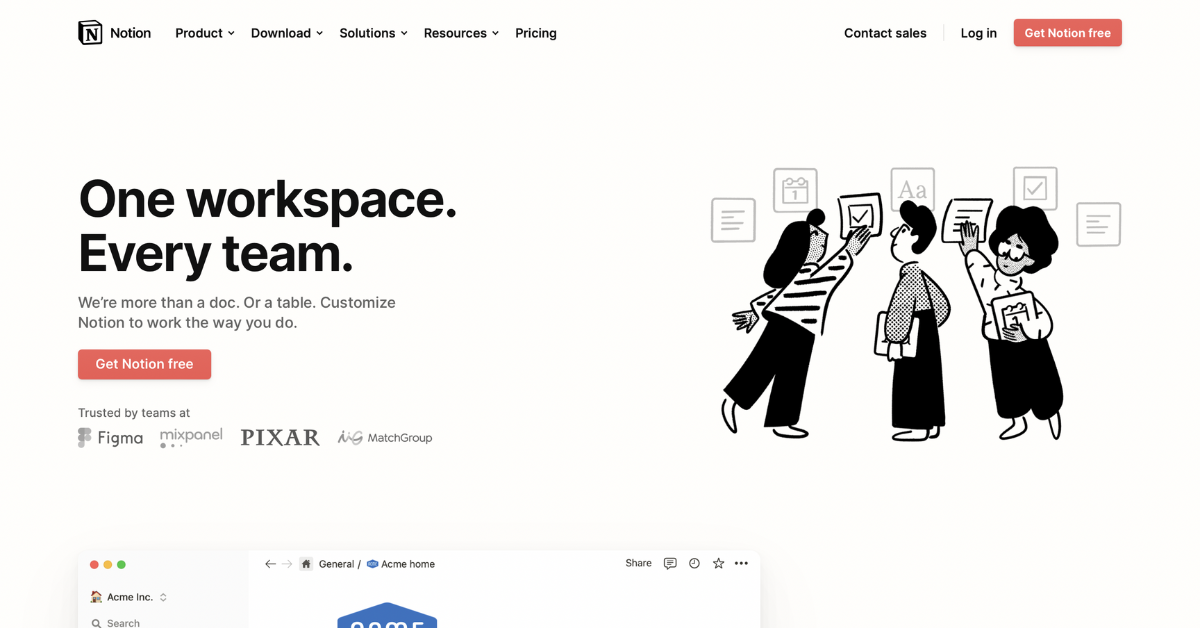
Rather than sign-ups or web visitors as KPIs, Notion’s Product and Growth Marketing team look at activated teams, updated team accounts, and pipeline value as its top three KPIs. This helps them identify potential customers and keep an eye on customer upgrades while also being aware of how much pipeline is in the funnel at any given time. Such unique KPIs which look at how well a product is growing and performing are key to a good product-led growth strategy.
Analyze the Right Metrics
While working on a product-led growth strategy, it’s very easy to get pulled into analyzing too many metrics to try to improve the product. But such an approach can turn out to be detrimental to the growth of the product. This is because signals from multiple metrics could create noise, diffusing clarity of thought and strategic decision-making.
| Learn how to drive an insights-led engagement culture to drive growth at your brand. Read our latest E-book launched in collaboration with Amplitude today! –>Download |
It’s important to analyze and consider only the right metrics. While it can be hard to decide those metrics, a thorough analysis of the customer journey will help filter what is important and what is not. What’s next is for product leaders to look at how to analyze these metrics to unearth patterns in product growth.
ShareChat offers a good productled example in this regard. While it would seem that the time spent on the app is the most obvious one for it to measure, this can be misleading because it doesn’t give insight into cohorts and their specific customer traits.

To get deeper insights into their customers, ShareChat relies on metrics such as DAU and MAU that are segmented based on region. This gives them a bird’s-eye view of customer adoption distributed across segments. In addition to this, ShareChat also tracks app usage during peak days such as festivals and observes the type of content being consumed. This helps them decide how to tweak the product strategy to enable faster growth and expand the customer base.
In the same way, every product is bound to have a few metrics that can represent the adoption, use, and engagement of the product in the most accurate way. What’s important is to go through the customer journey to find these metrics.
The Way Ahead
If there’s one key takeaway for you from this blog—it is that you cannot ignore product-led growth in today’s market. While a sales-led company might see an initial burst of qualified leads and new customers, a strategy devoid of a product-led approach will make it hard to retain customers and deliver higher revenue in the long term. This is in contrast to a product-led company, where the market strategy is focused equally on creating an inherently viral product and on increasing engagement and retention among existing customers.
A product-led growth strategy is the surest way to lower customer acquisition costs and efficient growth. Marketing teams in such companies make the product the core of all marketing efforts and will find it easier to implement a go-to-market strategy. A product-led company is also bound to have a greater number of satisfied customers because of the emphasis it gives to understanding customer behavior and reducing the time to value to beat churn.
It is evident from the examples of product-led companies we have looked at that such a strategy not only helps in creating higher value and demand for the product, but also develops a long-term relationship with the customer. The benefits of adopting a product-led approach far outweigh its costs, and the process of creating such an approach is in itself an experience that will help companies discover several new strategies that it has not considered before.













